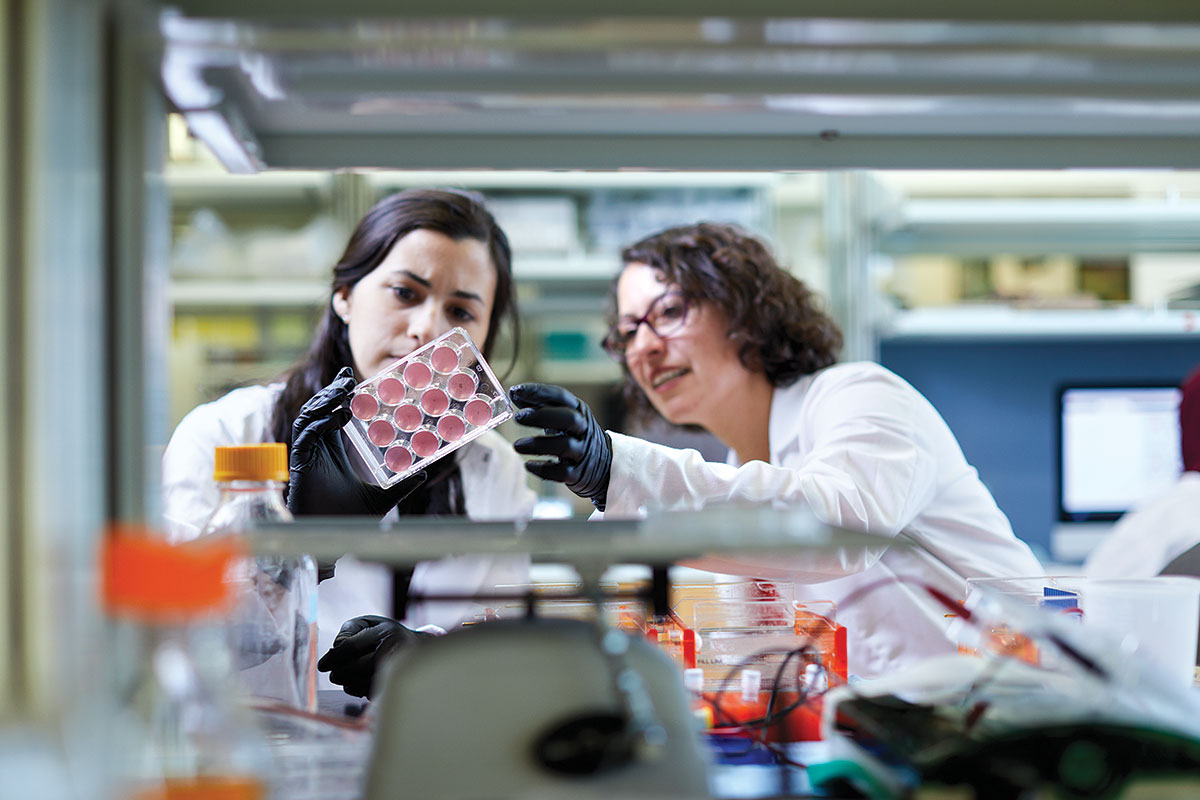
Deep discussions about enzyme chemistry, fatty acids, lipids and cardiac metabolism revealed a scientific kismet of sorts between William H. Danforth, MD, chancellor emeritus of Washington University, and renowned biochemist P. Roy Vagelos, MD.
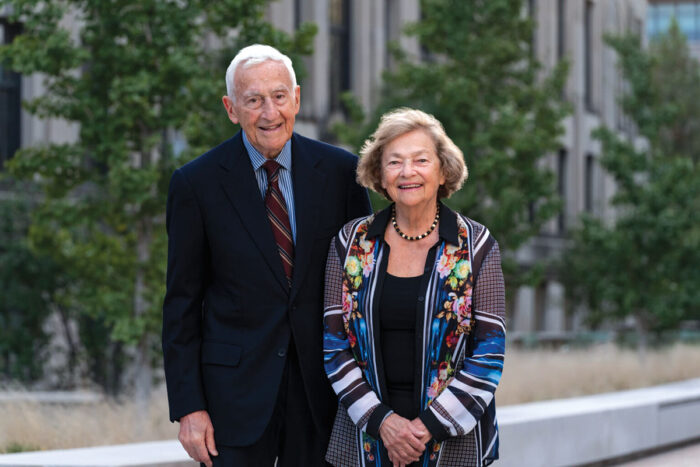
This shared devotion to basic science would lead to a decades-long friendship and the 1973 formation of one of the university’s most integral programs, the Division of Biology & Biomedical Sciences (DBBS).
To honor Danforth, who died in 2020 at age 94, Vagelos and his wife, Diana Vagelos, made a $15 million gift to DBBS. The gift will fund graduate student fellowships, particularly in novel research areas, and bolster undergraduate programming.
The university has renamed DBBS the Roy and Diana Vagelos Division of Biology & Biomedical Sciences in recognition of the couple’s generosity.
An intellectual kinship
Before moving into administration, Danforth, a biochemist, conducted basic science research in the laboratory of Washington University Nobel laureates Carl and Gerty Cori. In the mid-1960s, Danforth, then-vice chancellor for medical affairs at the School of Medicine, recruited Vagelos, who was working at the National Institutes of Health (NIH), to succeed Carl Cori as head of the WashU Department of Biological Chemistry.
From their first meeting, Vagelos recalled, the physicians bonded over basic science research.
“Bill Danforth was convinced that the improvement of human health would depend on good doctors as well as new knowledge emerging from biomedical research,” said Vagelos, chairman of the board at Regeneron Pharmaceuticals since 1995. “He strongly felt that a great university medical school would be rooted in science. We shared this belief.”
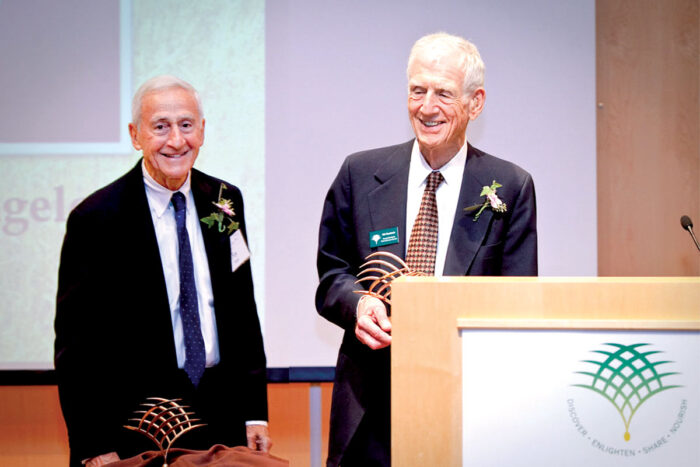
Danforth and Vagelos could talk for hours about basic science — the intricacies, the possibilities — but when it came to enhancing the university’s training in the life sciences, their discussions were brief and their decision-making quick and decisive. “When I explained to Bill what I was trying to do in creating DBBS, he became excited and immediately suggested funding sources,” Vagelos recalled with a chuckle. “I didn’t even have to ask for the money. He offered it. It was incredible.”
With Danforth’s unwavering support, Vagelos transformed undergraduate and graduate education in the biosciences at Washington University and, by extension, across university campuses nationwide.
The ‘WashU model’
A pioneering model for interdisciplinary education in the life sciences, DBBS united basic science departments from the School of Medicine with the Department of Biology in Arts & Sciences to offer unparalleled training and research opportunities for undergraduate, graduate and medical students. The division served as a bridge across Forest Park by joining the university’s two geographically separate academic campuses.
Such collaborations elevated the caliber of the university’s life sciences curriculum while also advancing scientific discovery and innovation. Known in academic circles as the “WashU model,” DBBS has been emulated by top biomedical centers, including the NIH.
Since its creation, DBBS has ranked as one of the best U.S. doctoral programs. Today, the division comprises about 600 graduate students and 13 doctoral training programs. Faculty members from 30-plus departments, including those at the School of Medicine, the McKelvey School of Engineering and Arts & Sciences, contribute to the admission, teaching and research training of the division’s students.
“In founding DBBS, Roy forged unprecedented connections between academic departments, Washington University’s main campuses, and undergraduate students and medical school faculty,” Chancellor Andrew Martin said. “Fifty years later, the division remains a nexus for pathbreaking science conducted at the university. This gift will raise DBBS to even greater heights and expand its reach to more aspiring physicians and scientists.”
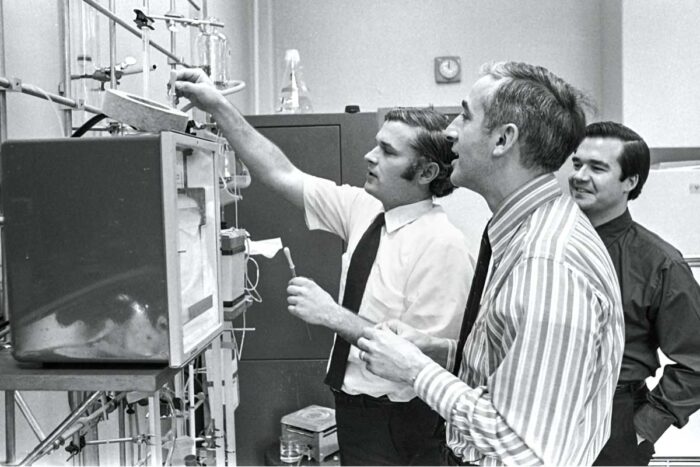
The Vageloses’ gift will increase fellowship opportunities, easing stress and reducing time spent applying for grants, so students can more easily focus on research itself. It also is a testament to Washington University as a major research powerhouse that continues to grow.
“Research is ultimately the expression of how we improve at treating diseases,” said David H. Perlmutter, MD, executive vice chancellor for medical affairs, the George and Carol Bauer Endowed Dean of the School of Medicine, and the Spencer T. and Ann W. Olin Distinguished Professor. “Roy and Diana’s generous endowment will allow us to strengthen research enterprises on both campuses by leveraging the last five years’ remarkable growth in research technologies to enhance science education across the university.
“The gift also speaks to Washington University’s supportive, tight-knit community, where lifelong professional partnerships and personal relationships are formed,” Perlmutter added. “Roy conceived of DBBS, and Bill Danforth brought it to life.”
Vagelos and Danforth formed a close friendship, as did their wives, Diana Vagelos and Elizabeth “Ibby” Danforth (who died at age 75 in 2005). During a trip to Greece, the couples toured an archeological site on the island of Ithaca, believed to be the castle of Odysseus, hero in Homer’s epic poem “The Odyssey.” “That trip was one of our most memorable,” Diana Vagelos said. “For Ibby and Bill, there was no hill too high to climb, no ancient ruin too insignificant to bypass, no myth too wild to believe, no beach too stony to swim and no meal too exotic to enjoy.”
Indeed, the founding of DBBS is rooted in their friendship and shared conviction that basic science can improve human health and better the world. Both Vagelos and Danforth have cited the division’s formation as a point-of-pride achievement.
A forward thinker
Vagelos’ vision for DBBS proved prescient. “It’s mind-blowing to me that 50 years ago, Roy Vagelos recognized the importance of breaking down administrative barriers and disciplinary silos to help provide cutting-edge training for undergraduate, graduate and medical students,” said Feng Sheng Hu, PhD, dean of the faculty of Arts & Sciences, the Lucille P. Markey Distinguished Professor in Arts & Sciences and professor of biology and of earth and planetary sciences.
“I’m particularly delighted that this gift includes a focus on undergraduate programs,” he added. “It will unlock exciting opportunities for our students, and investing in their careers at an early, formative stage will ultimately advance both research and medicine.”
During his tenure, Vagelos also recruited leading scientists to the faculty and founded the university’s highly regarded Medical Scientist Training Program, which offers students the opportunity to earn doctoral and medical degrees simultaneously and is considered among the top MD/PhD programs in the country.
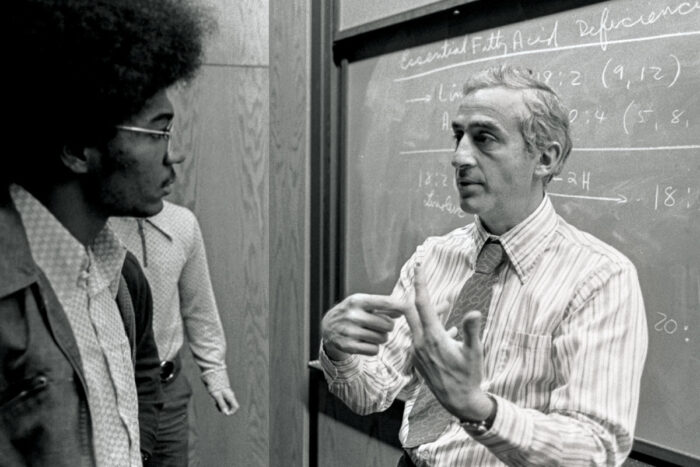
“Roy was the best department head I saw while I was at Washington U,” Danforth said during a 2007 interview for Becker Medical Library’s Oral History Project. “He was incredible. … Roy was so imaginative. He went out of his way to get good people and make sure things worked well.”
Steven J. Mennerick, PhD, the DBBS interim associate dean of graduate studies and the John P. Feighner Professor of Neuropsychopharmacology, said Vagelos unified diverse stakeholders in a schoolwide vision of biosciences training. “The vision recognized that the best science is done at the boundaries between departments and disciplines,” he said.
In 1975, Vagelos left the university to join Merck & Co., where he directed the discovery of the statin drugs Mevacor and Zocor for reducing blood cholesterol. There, he ascended to CEO and chair. After retiring from Merck, Vagelos joined the board of directors as chair of Regeneron Pharmaceuticals.
At Danforth’s invitation, Vagelos served on the boards of the Danforth Foundation and the Donald Danforth Plant Science Center. Additionally, the Vageloses, who reside in Far Hills, N.J., have continued their support of the university over the years by funding a professorship and a fellowship. To their delight, their granddaughter Emma is a second-year undergraduate.
“Washington University is one of the world’s great academic and research institutions,” Roy Vagelos said. “Bill Danforth devoted his life to the university because he knew that knowledge and research, ultimately, could better humanity. DBBS is a source of pride for both Diana and me, and we want to honor Bill’s legacy by further elevating an already stellar program.”
Published in the Winter 2021-22 issue


